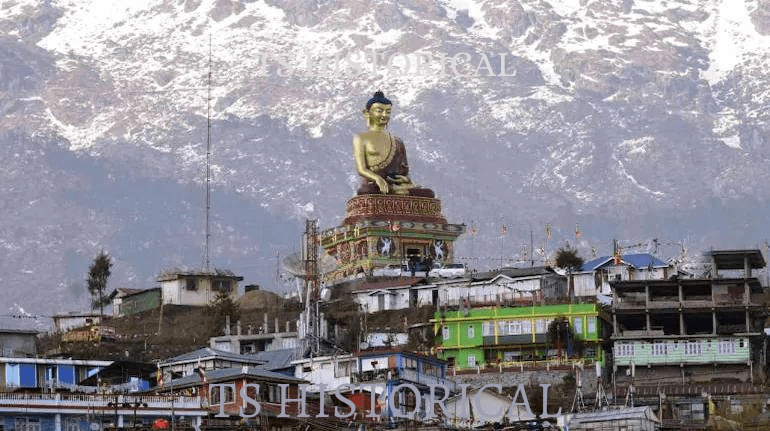Table of Content
History of Arunachal Pradesh
Arunachal Pradesh It is believed that this place was famous even in the Times of Ramayana and Mahabharata and is also mentioned in the ancient texts of Kalika Purana and Mahabharata it was addressed as Prabhu Mountains in the Puranic era Parshurama performed Atonement here Maharshi (great sage) Vyasa meditated here and king Bhishmaka ruled here well it appears that the written history of Arunachal Pradesh is not abundant it is believed that many people here are descendants of Abotani not much is known about him, but he is believed to be the first member of Tagin, Nyishi, Adi, Galo, and Apatani Tribes much about Tani People can be known from the Tibetan libraries Tani people and Tibetan People had traded with each other since ancient times Tibetan people called Tani people as ‘lobha” lo means south and bha means people.

Monpa and Chutia Kingdom

Even if these kingdoms had ruled over a big part of Arunachal still most of the Tribes here were self-sufficient and autonomous until Indian Independence the host is talking nonsense in 1522 the Chutiya king Dharmdhwaja Pala planned a ‘SwayamVara’ for his daughter Sadhani.
A squirrel–running at some high place–was to be killed a herdsman named Niti won the SwayamVara and subsequently made king and renamed Niti Pala Niti Pala was an incompetent Ruler, he removed all the existing ministers and placed his village men in their positions all the kingdom went into chaos and Ahom king Suhungmung took the opportunity and attacked Niti Pala was killed Queen Sadhani fought until the end and after refusing the marriage proposal from the then governor of Assam.
Download this Article in PDF Format
Get a well-documented version of this article for offline reading or archiving.
Download Now (1151 KB)She jumped from a cliff and died an ex-minister of the Chutia kings played a pivotal role for Ahoms he was one of the ministers removed by Niti Pala due to a stronghold in the hinterland, the chutia dynasty kept on trying to regain the lost kingdom for at least 150 years to come gorilla war maybe.

The northern part of the state is somewhat influenced by Tibet some even consider it as a part of Tibet, it’s up to them (The host is talking about that red flag in the top corner) Monpa people are living in the area since ancient times as per the wishes of 5th Dalai lama Ngawang Lobsang Gyatso, Merak Lama Lodge Gyatso established Tawang Monastery in 1681.
6th Dalai Lama was born here due to the Burmese attacks in 1818, Ahom advisor Ruchinath Burhagohain replaced then-king Chandrakant Singh with Purandar Singh Purandar Singh lost in the second Burmese attack in 1819 and the Burmese put Chandrakant on the throne once again and due to increasing sour relations, they removed him from the throne in 1821.
This time the person made to sit on the throne was Jogeshwar Singh some say that after defeating the remaining army of Chandrakant Singh he was also removed while others say he remained as a puppet of the Burmese after the war between the British and the Burmese the Ahom kingdom fell in the hands of the British due to the problems they faced in ruling a foreign land, Purandar Singh was made a ruler once again and after not finding him as desired, they removed Purandar Singh in 1838 ending the 600 years long dynasty rule that is the rule of the kings ended in the year 1838.
Mc Mahon line in the Shimla convention of 1914, in which the British officials and the then government of Tibet was present Henry Mc Mahon proposed Mc Mahon line the legal status of which was rejected by China China pointed out that in the Anglo-Russian Convention of 1907 Britain and Russia accepted Tibet to be a part of China however both the countries denied that in 1921 Mc Mahon line is seen as the de facto line between India and China.
China has always objected after the rise of the Communist Party in 1949, India realized its intentions to control Tibet and declared Mc Mahon Line as its official border please take a look on screen in 1951 the tracts you are seeing on the map these all tracts became North Eastern Frontier Agency or NEFA in December 1957, Tuensang–a part of NEFA–was merged with Naga Hill District until 1972 NEFA was a part of Assam and was ruled by the Governor of Assam on 20 January 1972 NEFA was separated from Assam and made a Union Territory and renamed as Arunachal Pradesh and on 20 January 1987, it became a full state.
Read also: History of Mumbai, History of Sikkim
Discover more from TS HISTORICAL
Subscribe to get the latest posts sent to your email.

